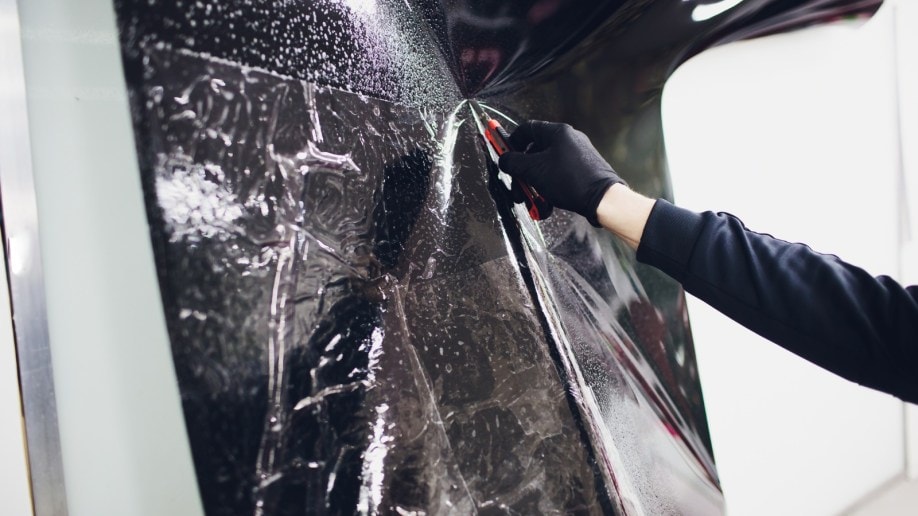How Vehicle Window Tinting Safeguards Your Automobile's Inside
How Vehicle Window Tinting Safeguards Your Automobile's Inside
Blog Article
Home Window Tinting Rules and Standards: What You Required to Know Before Tinting Your Cars And Truck
Prior to waging home window tinting for your lorry, it is important to familiarize on your own with the diverse legislations and guidelines that regulate this practice across various states. These policies dictate the acceptable levels of tint darkness, often measured by noticeable light transmission (VLT) portions, and consist of certain stipulations for front windscreens targeted at making certain roadway safety and security. In addition, particular jurisdictions may use clinical exceptions for people with certifying problems. Recognizing these intricacies can save you from possible legal ramifications, but what are the particular rules in your state?
Review of Window Tinting Regulations
Home window tinting laws are frequently based on variation across different jurisdictions, reflecting regional laws and safety considerations. These laws dictate the acceptable degrees of color darkness and reflectiveness on automobile windows, making sure that drivers preserve ample presence while likewise protecting against unsafe UV rays and heat.
Most policies identify home window tinting based upon the Visible Light Transmission (VLT) portion, which shows the amount of light that can pass via the window. Typically, lower VLT percents represent darker colors. Laws commonly set apart in between the front, side, and rear windows, with more stringent limitations related to the front windscreen to improve safety for both the motorist and various other roadway users.
Compliance with window tinting guidelines is crucial, as infractions can result in penalties, required removal of the tint, and potential increases in insurance costs. It is vital for lorry proprietors to familiarize themselves with neighborhood legislations prior to proceeding with window tinting installations.
State-by-State Color Rules
Recognizing the particular window tinting policies in each state is vital for vehicle owners seeking to adhere to the law. Each state in the U.S. has developed its very own collection of rules controling home window tinting, which can vary dramatically. These policies usually dictate the allowable levels of tint darkness, the sorts of windows that can be tinted, and any kind of clinical exceptions that might use.
For example, states like The golden state have rigid constraints on tint darkness for front home windows, while others, such as New Mexico, might permit darker tints. Additionally, particular states mandate details visibility percents for numerous windows, including the windscreen, front side home windows, and rear windows. It is vital for cars and truck proprietors to familiarize themselves with their state's regulations to stay clear of prospective fines or penalties.
Additionally, some states might require an accreditation sticker label to be positioned on tinted windows, indicating conformity with state laws. Failure to stick to these policies not just takes the chance of legal effects but can additionally affect safety and visibility while driving. Automobile owners must carry out complete research study or seek advice from local authorities to guarantee complete understanding and conformity with state-by-state tint laws.
Allowed Tint Levels and Kinds
Lots of car proprietors may be surprised to learn that allowed tint degrees and kinds differ extensively throughout different states. Each state has actually established its very own policies pertaining to the permissible darkness and reflectivity of window tint, commonly measured by Visible Light Transmission (VLT) portions. VLT describes the quantity of light that can travel through the colored home windows; thus, a reduced portion indicates a darker color.

In addition, the kinds of tint products allowed more tips here can differ, with some states banning mirror-like or metal coatings. It is essential for car owners to acquaint themselves with their state's specific laws to make certain conformity. Non-compliance can result in penalties, necessary removal of the color, or other legal effects, making it necessary to recognize these laws before continuing with setup.
Medical Exemptions for Tinting
While not all states supply allowances for medical exceptions pertaining to home window tinting, those that do acknowledge the need for certain people to enhance visibility and convenience as a result of medical problems. Various clinical conditions, such as lupus, skin cancer cells, and certain eye problems, can render individuals particularly conscious sunshine. As a result, these individuals may require darker tints to protect themselves from harmful UV rays and glow.

It is vital to keep in mind that despite a medical exception, there might still be constraints on the level of color permitted. Compliance with state legislations makes sure that people are both safeguarded and within legal limitations. Those thinking about clinical exceptions must contact their neighborhood Division of Motor Cars or equal authority to comprehend the demands and procedures needed to use for an exemption properly.
Fines for Non-Compliance
Failing to adhere to home window tinting laws can cause significant penalties, which vary by state. Legislation enforcement companies are encouraged to release citations for vehicles that do not abide by the defined tinting laws. These charges commonly consist of fines, which can vary from moderate quantities to numerous hundred bucks, depending on the severity of the violation and the state concerned.
In some territories, repeated offenses may lead to intensifying fines or added fines, such as compulsory court appearances. Non-compliance might demand the elimination of prohibited tinting, typically at the proprietor's expense. In severe instances, regular culprits may my site deal with suspension of their vehicle registration till conformity is accomplished.
Furthermore, insurance policy ramifications may occur from obtaining several citations for window tint offenses. Insurance providers might view such violations as a sign of riskier habits, potentially resulting in raised costs or difficulty in protection.
To avoid these penalties, it is critical for car proprietors to acquaint themselves with their local window tinting regulations and make sure that their vehicle complies (Window Tinting). This proactive strategy not just avoids lawful ramifications yet additionally advertises roadway security
Final Thought

Most policies categorize home window tinting based on the Visible Light Transmission (VLT) percent, which shows the quantity of light that can pass with the window. Conformity with window tinting regulations is critical, as violations can result in fines, required elimination of the tint, and potential rises in insurance policy premiums.Comprehending the specific home window tinting policies in each state is important for vehicle proprietors seeking to abide with the regulation. These policies often dictate the allowed levels of color darkness, the kinds of windows that can be tinted, and any clinical exceptions that may apply.
For circumstances, states like The golden state have stringent limitations on tint darkness for front home windows, while others, such as New Mexico, may permit darker tints.
Report this page